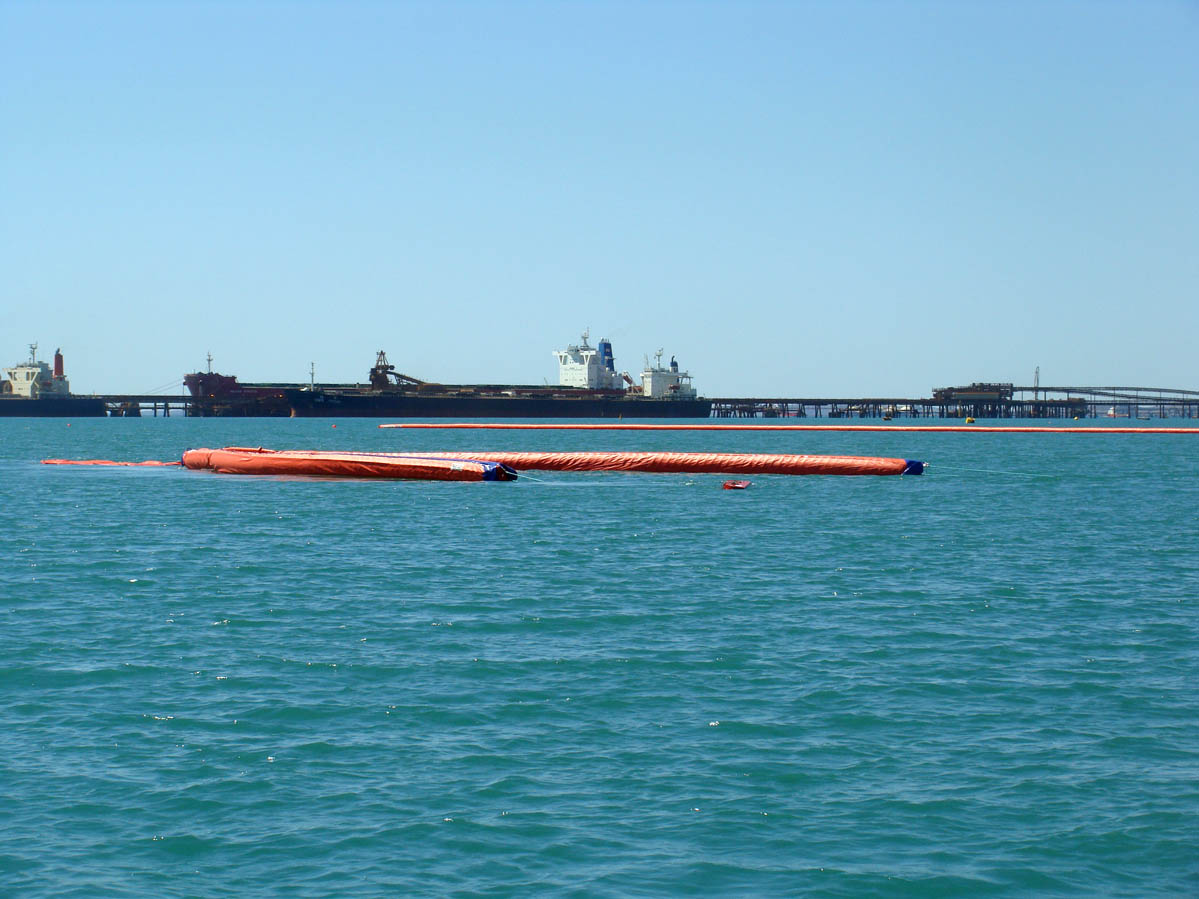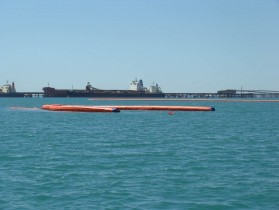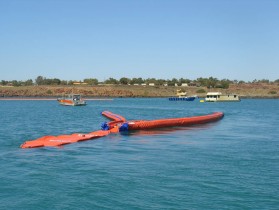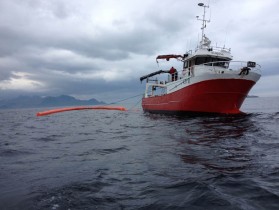The Fast Current Boom System from NorLense is a containerized one-man-operated system with single point inflation of the boom part. The deployment and the retrieval of the system are operated by only one man. There is no need for deck space as the system is deployed directly from the container/reel into the sea.
Flexible Solution
Oil collected by the trawl ends up in a storage unit. When full, it is easily disconnected and replaced with a new one. The operation can then proceed. The full storage unit closes automatically – and flows on sea until it is towed to shore or emptied by a storage vessel. The storage unit is equipped with a customer specified coupling, which makes it possible to pump oil to tank on operational or external vessel. When collection bag is full it may be disconnected and valve is locked for towing bag to shore. New collection bag is then connected and recovery operations continue. The collection bag may also be connected (by use of valve of top) to transfer pump system and pumped to tank capacity vessel.
The collection/storage bag has also the function of separating the water from the oil. This means that you will not need an oil skimmer in addition to the NorLense Fast Current Boom System.
The Oil Trawl can also be supplied with an integrated skimmer pump. This enables continuous pumping of collected oil on board to the vessel which operates the trawl. The skimmer pump is an optional ad-on that increases flexibility – and may come in handy as an emergency discharge pump if needed.
Testing and verification at Ohmsett facilities in New Jersey USA in June 2013. Recovery rate up to 92%.
Features
- Containerized System
- Single point inflated
- One person operated
- Deployed/retrieved directly from container/reel into the sea
- No need for deck space during deployment and retrieval
- Prepared for single boat operation when used with paravan
- Water separator in collection bag
- No need for additional skimmer as water separates in collection bag
- Can integrate with the NO-450/600-S booms by quick connectors in the end of the boom arms.





 DOWNLOAD TECHNICAL SPECIFICATION SHEET NO-T-600S
DOWNLOAD TECHNICAL SPECIFICATION SHEET NO-T-600S